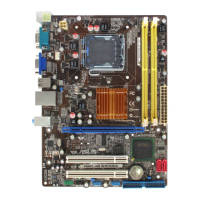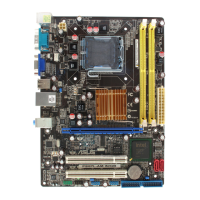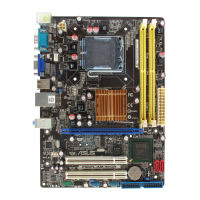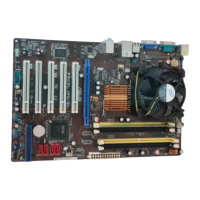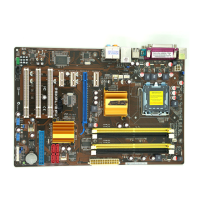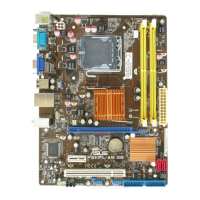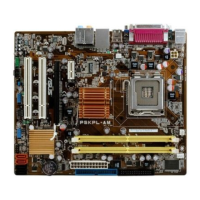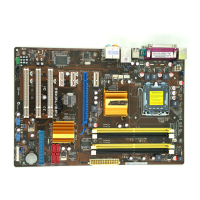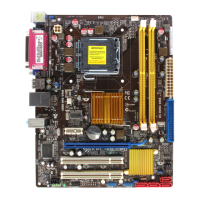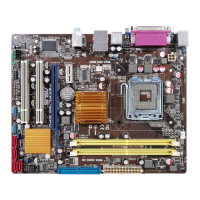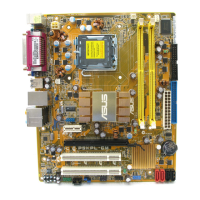Do you have a question about the Asus P5KPL IN/SI and is the answer not in the manual?
Precautionary measures before installing motherboard components or changing settings.
Details the motherboard layout, components, and connector locations.
Information on the LGA775 socket and compatible Intel processors.
Covers DDR2 DIMM sockets, memory configurations, and qualified vendors.
Describes PCI and PCI Express x16 slots for adding hardware.
Explains jumper functions for USB wake-up and clearing CMOS.
Details various connector types on the motherboard.
Details rear panel ports including PS/2, LAN, USB, and audio connectors.
Details internal connectors like SATA, USB, and front panel audio headers.
Information on installing operating systems and using the support CD.
Guide to saving, managing, and updating the motherboard BIOS.
Utility for managing, saving, and updating BIOS within Windows.
Utility for updating BIOS without a DOS environment.
Auto recovery tool to restore BIOS from corruption.
Instructions on entering and using the BIOS setup utility.
Overview of basic system information displayed in the BIOS main menu.
Allows setting the system's current time.
Allows setting the system's current date.
Configuration options for SATA devices, including LBA and DMA modes.
Settings for SATA devices, including SATA mode and IDE time out.
Displays general system specifications detected by the BIOS.
Allows modification of CPU, chipset, and other system device settings.
Settings related to CPU ratio, C1E, and thermal monitor functions.
Advanced chipset settings including North/South bridge and memory timing.
Enables or disables onboard devices like LAN and audio.
Settings for USB functions, controllers, and legacy support.
Settings for PCI and PnP devices, including IRQ and DMA.
Configuration options for Advanced Power Management (APM).
Settings for boot device priority and boot behavior.
Options for setting supervisor and user passwords for BIOS access.
Access to special function utilities like EZ Flash and AI NET.
Options for saving or discarding changes and loading default settings.
Includes FCC, Canadian, and REACH compliance statements.
Provides essential electrical and operational safety precautions.
Explains the manual's organization and purpose.
Summarizes key specifications for CPU, Chipset, Memory, and slots.
Summarizes BIOS features, manageability, accessories, and form factor.
Explains symbols used in the manual and text formatting conventions.
| Form Factor | Micro ATX |
|---|---|
| CPU Socket | LGA 775 |
| Memory Type | DDR2 |
| Memory Slots | 2 x DIMM |
| Maximum Memory | 4 GB |
| Graphics | Integrated Intel GMA 3100 |
| Expansion Slots | 1 x PCIe x16, 2 x PCIe x1, 1 x PCI |
| Storage Interface | 4 x SATA 3Gb/s |
| IDE Ports | 1 x ATA100 |
| Chipset | Intel G31 |
| CPU Support | Intel Core 2 Quad, Core 2 Duo, Pentium, Celeron |
| Audio | Realtek ALC662 6-Channel High Definition Audio |
| USB Ports | 8 x USB 2.0 (4 rear, 4 via headers) |
